Sustainable practice in industry calls for an end to the notion that commerce and the environment are diametrically opposed to each other. We apply design thinking to the greatest of all problems: building a sustainable ecologic, economic and social culture in Savannah with Emergent Structures.
| Timeline: | 3 Months, Jan-Mar 2019 |
| Role: | Design Research, UX Design, Co-design workshop facilitator |
| Location: | Savannah, GA |
We are •


Emergent Structures is a non-profit organization dedicated changing our society’s perception of waste. Emergent Structures aims to reduce the land-filling of building materials through innovative re-purposing projects.

Thirteen students, with backgrounds in Design for Sustainability, Design Management, Interaction Design, Industrial Design, and Service Design at SCAD, contributed our different skillsets and creative concepts to make this happen.
The Design Challenge •
How can we act as a catalyst for a more vibrant “green economy” in Savannah, especially as it pertains to the deconstruction and repurposing of building material as a resource for local economic vitality?
Our Solutions •
Savannah’s historic materials deserve a place in our heritage for years to come, not a spot in another landfill. RE: PURPOSE SAVANNAH includes the product, service, and strategy design to catalyze the ecosystem of repurposing reclaimed materials in Savannah.
01 ENDORSEMENTS
Endorsed by the City of Savannah’s Office of Sustainability, this RE: PURPOSE SAVANNAH seal certifies the authenticity of this product’s sustainable sourcing of reclaimed materials. Re-purpose Savannah, and take home a piece of history

02 SHAPE SAVANNAH COMPETITION
Connecting creative minds with reclaimed materials. The goal is to encourage local makers and artists to use reclaimed materials and develop a product that represents the spirit of the city of Savannah..

03 SUSTAINABLE GUIDE MAP
Mapping and connecting all actors in the Savannah Reclaimed Material Ecosystem, which aims to bridge the communication gaps and cultivate the collaborations between actors. New actors or resources can be added on the map about architectural preservation, deconstruction, or repurpose reclaimed materials. Users are able to find location-based tangible and intangible resources or donate their resources to nearby actors on the map.

How we get there •
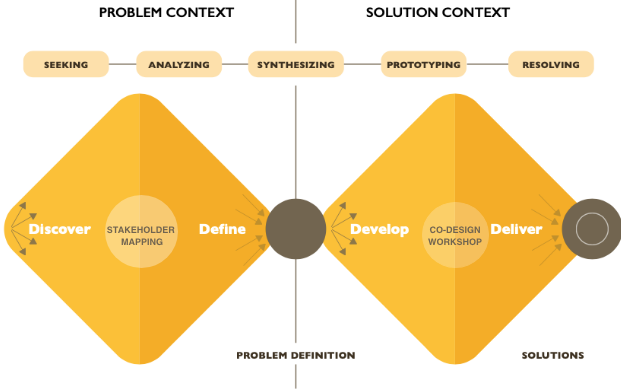
Secondary Research
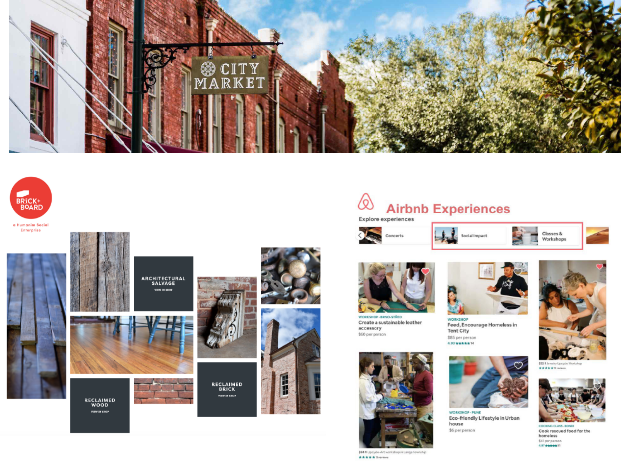
Primary Research
To understand the different stakeholders involved with deconstruction, reclaimed materials, and sustainability in the City of Savannah, interviews, observations, and 3X3X3 fieldwork were used as primary research methods.

“Preservation is always the best and reuse of materials and deconstruct is always the next best”
— Ryan Arvay, Historical Properties
Coordinator, Historic Savannah Foundation
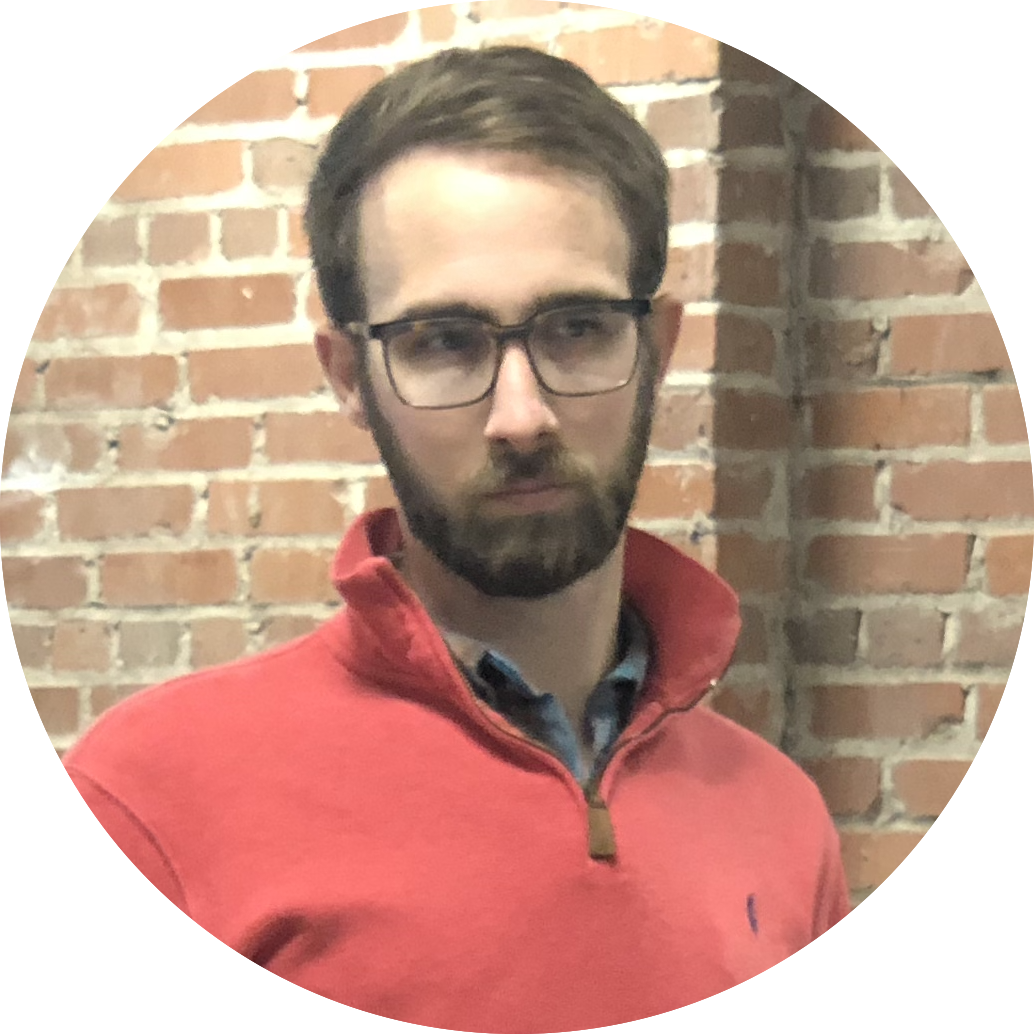
“You’re a silo in a sense, the way you do things, but there is enough overlap where you can communicate and also see the benefit of working together”
— Ty Donaldson, Co-Founder
Maven Makers LLC

“We would love to repair the house that is next to the house that we are taking down, with the pieces of material that we are taking down. It is the most sustainable use of the materials.”
— Mae Bowley, Assistant Director
Emergent Structures

“Every success, every effort we make is directly a result of the amount of collaboration with key partners that we have. So, we're always doing this with collective impact.”
— Nick Deffley, Office of Sustainability
City of Savannah
Affinitization

Stakeholder Mapping
We mapped out all of the stakeholders in the map and invited multi-stakeholders to collaborate and brainstorm the relationships between different actors, who is missing and what kinds of relationship between each actor.



Design Principles •
Which are the most valauble solutions for 10 weeks?
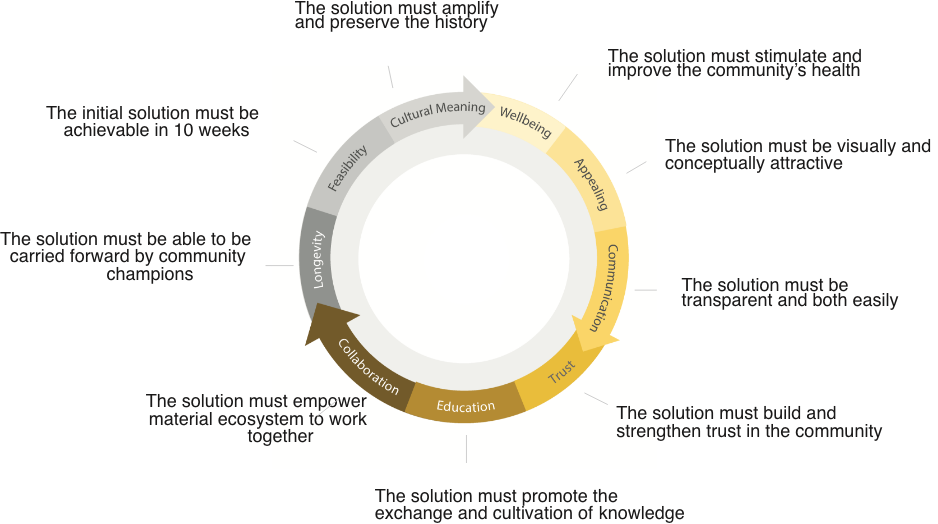


Concept #1 •
Re-purpose Savannah and take home a piece of history.
Waste is a product of short-sightedness. The RE: PURPOSE SAVANNAH campaign aims to educate the public on the value and process of deconstruction, support and expand existing landfill diversion initiatives, generate demand for reclaimed materials in the marketplace, and build on existing examples of innovative material reclamation and reuse.

CERTIFICATION PROCESS
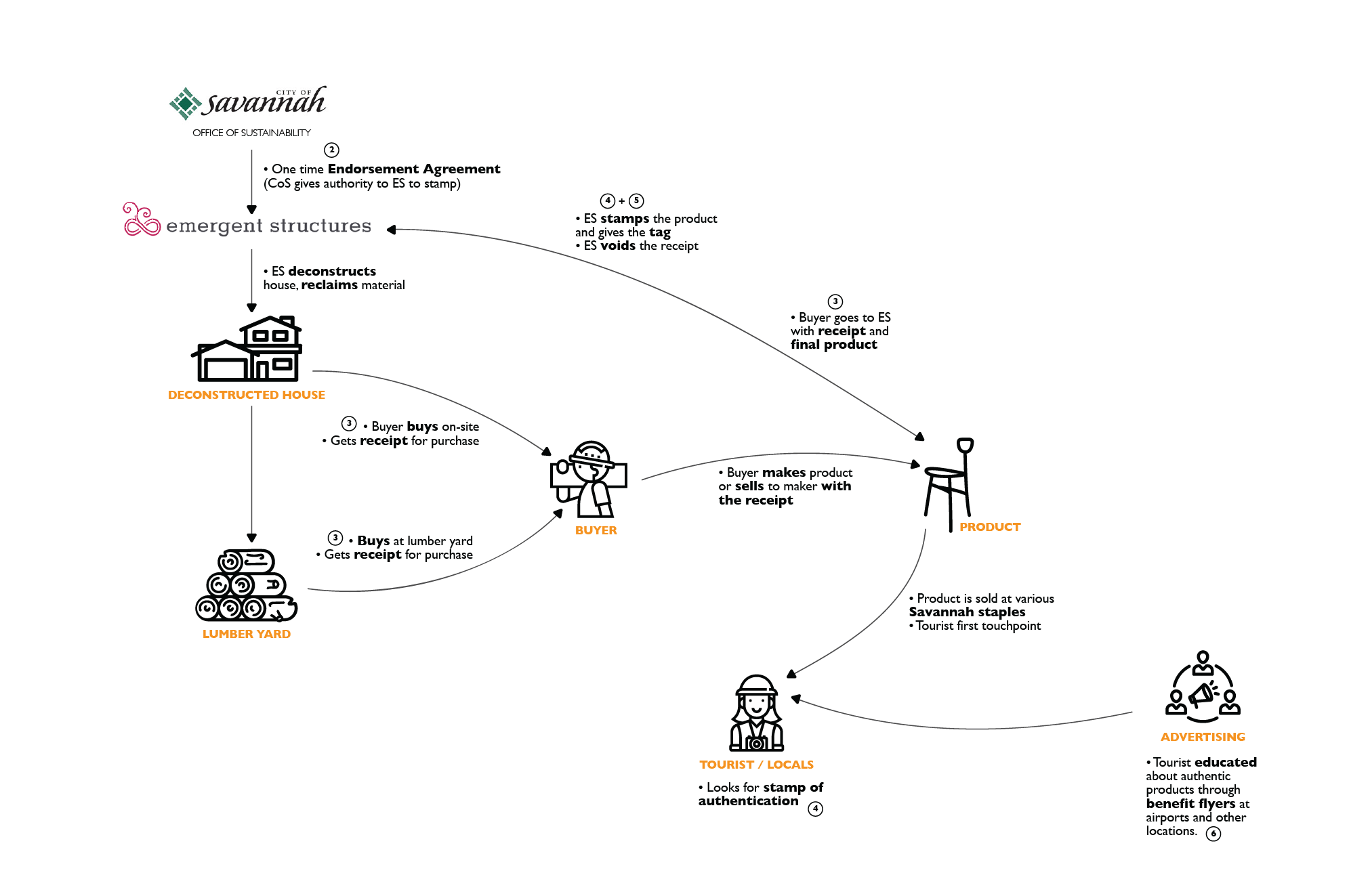
Concept #2 •
If you could design a product that captures the essence of Savannah what would that be?
Waste is a product of short-sightedness. The RE: PURPOSE SAVANNAH campaign aims to educate the public on the value and process of deconstruction, support and expand existing landfill diversion initiatives, generate demand for reclaimed materials in the marketplace, and build on existing examples of innovative material reclamation and reuse.


Concept #3 •
A powerful online and printed map to bring actors together and build hidden connections in this ecosystem.
Relationship Map Visualize Initial Champions on the Relationship Map

Site map


UI Design

Real-time and location-based information
Get updated information about available materials. The deconstruction often happens in different locations, the map will help the local community to find neighbors’ lumber yard.
Connect with the right resources
Users can select presets to identify who they, what resources they are looking for, or report emergent accidents related to the emergent house or fallen trees.


Allow user to dd new actors or resources

